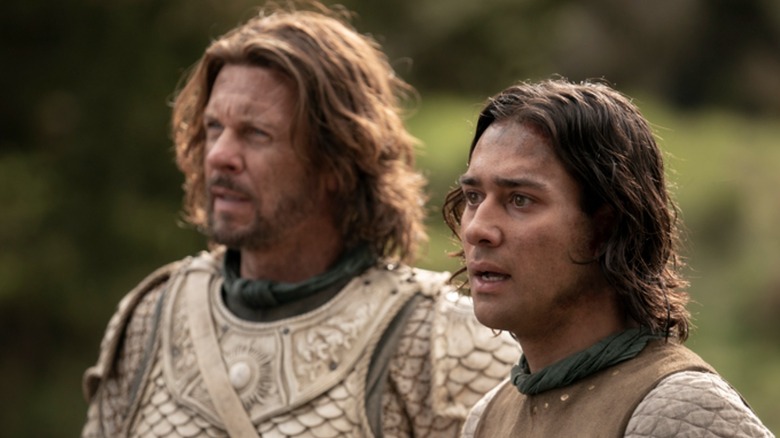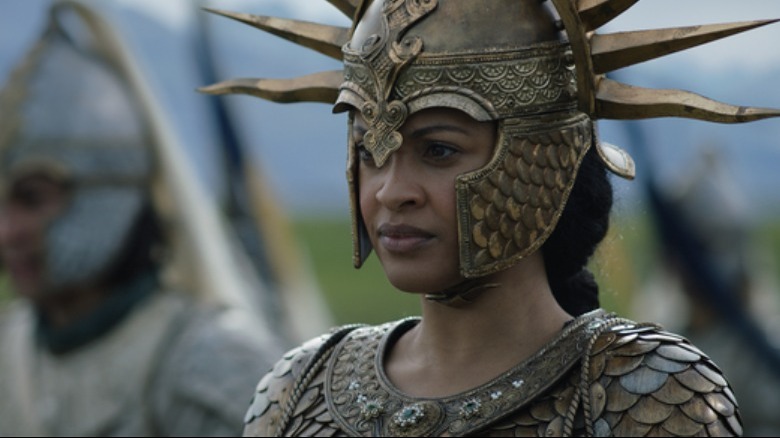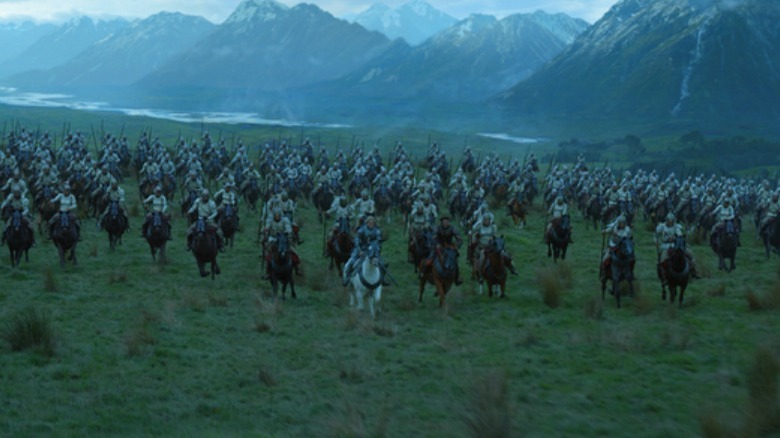The VFX In The Rings Of Power Episode 6 Is Not What You Think [Exclusive]
The visual effects process for "Lord of the Rings: The Rings of Power" is endlessly interesting, and I say this as someone whose typical response to VFX talk is of the "old man yells at clouds" variety. CGI-heavy stories too often look very bad, unreal and distracting, and dull all at once. But so far, that hasn't been the case with "The Rings of Power," and it's clear why: The cast and crew has emphasized again and again in interviews how thoughtful the production's approach to digital effects has been, using practical whenever possible and making sure they have the best technology they can find in order to make the digital aspects of the show look seamless.
The "Rings of Power" effects team also, apparently, did a lot of integration between real shots of on-set stunts and CG scans of actual footage that couldn't be shot simultaneously for reasons of safety or practicality. Visual effects producer Ron Ames spoke with /Film's Vanessa Armstrong in time for the release of this week's episode, which featured massive battle sequences, horseback chases, and a terrifying volcanic explosion. During the course of their conversation, Ames revealed exactly which parts of the episode's biggest scenes were digital — and the answer is a lot less than you might have expected.
On-set safety determines some of the effects choices
"How we determine what to use VFX for is not what you would think — it isn't the thing that is most dangerous that you do in visual effects," Ames shares. "So when a person fell off a horse or a horse laid down or got up or a chain comes across a bunch of orcs, all of that stuff was real." The VFX producer explained that the effects are actually often reserved for minor aspects of crowded shots, saying, "It was the additional things, the things in the foreground, adding more horses, adding more people, adding more orcs so that we made it more dense."
Ames also says some effects work is done "for safety" in scenes that would be risky to film in real life, like when a horse gets too close to a horde of orcs. "You have a horse jumping over a crowd of orcs, the horse would do its jump with the orcs represented with dummies and stuff like that," Ames explains. "Then we'd shoot it again with a computerized camera that would do the exact same move of the people on the ground, putting those together, safely making it real."
'Handmade, beat by beat'
The effects producer goes so far as to explain exactly what's been added into the battle sequence in the most recent episode, saying, "In this particular case, CG horses, additional CG orcs and Númenóreans, all of those things were added, but all from real stuff." He says that scans of the horses on set were used to produce CG versions of their images, and that the floodwaters and cliffs during the explosion of Mount Doom at the episode's end also came from real-life set photography. In contrast, some CGI-heavy productions rely mostly on green screen rather than a hybrid combination of real-life set elements and scanned VFX reproductions.
Jamie Wilson, head of the show's prosthetics department, recently told IGN about the series' commitment to visual realism through practical and special effects, saying, "There are hundreds of productions that are heavy on visual effects, and you can see it, that the human eye is getting better and better and knows what is real and knows what isn't."
So far, the new series seems better than most at making its visuals feel natural, and its success seems to come from a team that, on every level, treats effects as a thoughtful, vital craft rather than an obviously sloppy afterthought. "The way I would describe it is handmade, beat by beat," Ames says of this week's effects.


